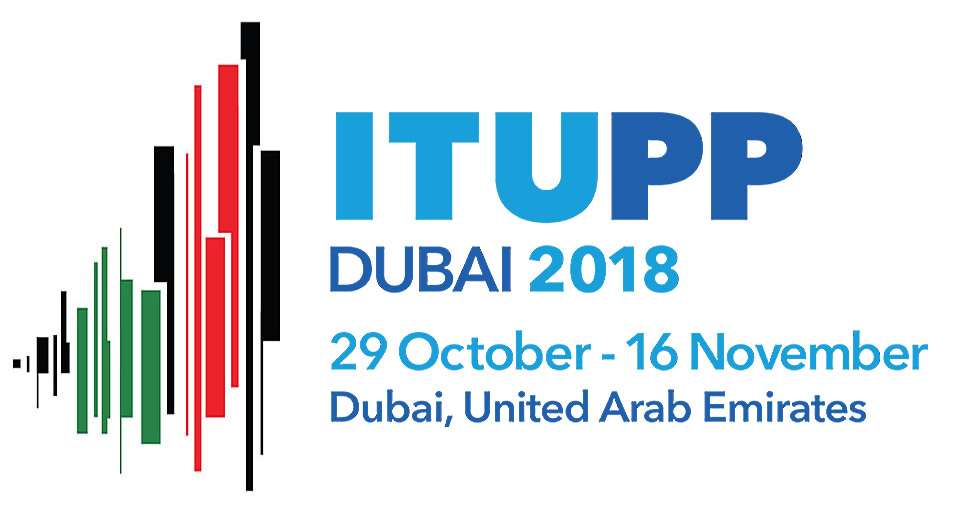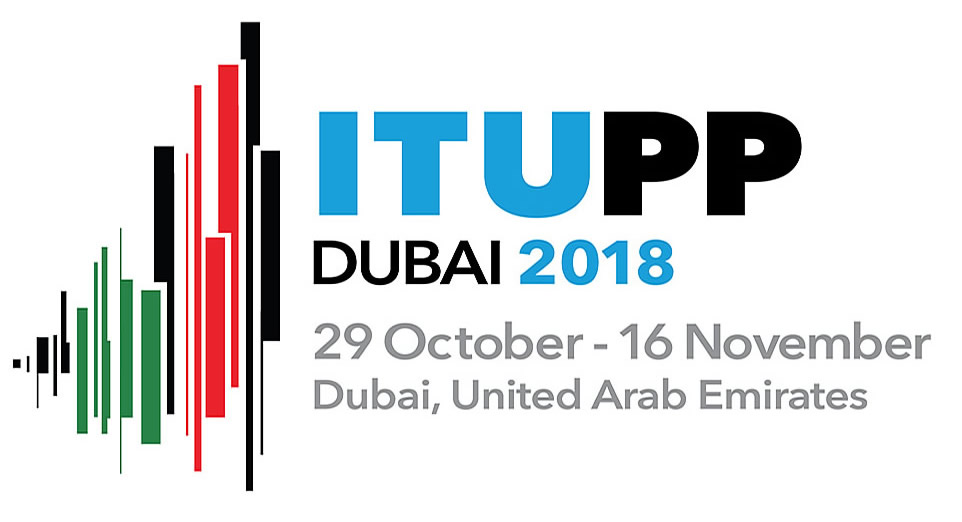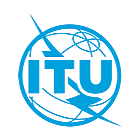This is the version of the backgrounder prepared for the Plenipotentiary 2018 Conference in October/November 2018. For the most recent version of this backgrounder, please see here.
Overview
- More than half of the world’s people live in cities today. By 2050, nearly seven in ten people will be living in cities. Cities account for more than 70 per cent of global carbon emissions and 60 to 80 per cent of energy consumption. Rapid urbanization has created additional challenges such as social inequality, traffic congestion and water contamination and its associated health issues.
- Governments and municipalities can use information and communication technologies (ICTs) and other technologies to build smarter and more sustainable cities for their citizens. A smart sustainable city is an innovative city that uses ICTs to improve quality of life, the efficiency of urban operations and services and competitiveness, while ensuring that it meets the needs of present and future generations with respect to economic, social, environmental and cultural aspects.[1]
- Although cities where all urban systems and services are connected do not exist as of yet, many cities are already on the path to becoming smart sustainable cities. They rely on ICTs, for example, to enhance energy efficiency and waste management, improve housing and health care, optimize traffic flow and safety, detect air quality, alert police of crimes occurring on the streets and improve water and sanitation systems.
- ICTs have the potential to accelerate the achievement of all 17 United Nations Sustainable Development Goals (SDGs), including SDG 11, which aims to achieve sustainable cities and communities.
Challenges and solutions
Smart sustainable cities need a telecommunication infrastructure that is stable[2] , secure[3], reliable[4] and interoperable[5] to support an enormous volume of ICT-based applications and services.
Recent developments in the Internet of Things (IoT), Artificial Intelligence (AI) and smart grids and meters are driving and supporting the development of smart sustainable cities throughout the world.
IoT—referring to the network of rapidly growing computing devices with built-in sensors and software to connect with each other and share data—enables billions of devices and objects equipped with smart sensors to connect with each other, collect real-time information and send this data, via wireless communication, to centralized control systems. These, in turn, manage traffic, reduce energy usage and improve a wide range of urban operations and services.
AI allows extremely large data sets to be analysed computationally to reveal patterns, which are used to inform and enhance municipal decision-making.
Smart grids—referring to electricity supply networks that use digital communication technology to detect and react to local changes in usage—help to optimize energy use in cities. Smart meters and sensors, equipped with Internet Protocol addresses, can communicate information about the end-users´ energy use to the energy supplier, giving end-users more control over their consumption.
While 3G and 4G networks used by mobile phones today pose a number of problems in supporting the range of services required for smart sustainable cities applications, the development of 5G, referring to the fifth generation of mobile technologies, has the potential to reliably connect devices to the Internet and other devices, transport data much more quickly and process a high volume of data with minimal delay.
ITU’s contribution to smart sustainable cities
ITU is working to improve the reliability, security and interoperability of ICT infrastructure needed for smart sustainable cities, while at the same time advocating for the use of ICTs to reduce the consumption of energy and enhance services and quality of life for city dwellers.
Setting standards
ITU and members within the ITU-T Study Group 20, which is dedicated to IoTs, smart cities and communities, have been developing international standards that establish technical criteria, processes and practices to enable a coordinated development of IoT technologies for smart sustainable cities. Most recently, the study group has been working on topics including AI, blockchain, machine-to-machine communication and Big Data aspects of IoT.
ITU and members within the ITU Focus Group on Data Processing and Management are working on the development of international standards that allow the IoT ecosystem to be fully inclusive, interoperable and capable of making full use of the data generated by the devices feeding into the system. This is to mitigate the risk of data ´silos´ emerging in different industry sectors.
ITU has also recently developed standards ensuring the security of networks in urban areas.
ITU’s work on standards for 5G systems, which will help make smart sustainable cities a reality, is also underway.
ITU standards outline how smart grids can help build more controllable and efficient energy systems.
The ITU Focus Group on Smart Sustainable Cities has identified standardized frameworks needed to support the integration of ICT services in smart cities and key trends in urban smart water management.
Global collaboration and advocacy
In 2016, ITU and the United Nations Economic Commission for Europe (UNECE) launched the global platform "United for Smart Sustainable Cities " (U4SSC) to advocate for public policy and to encourage the use of ICTs to facilitate and ease the transition to smart sustainable cities. The platform is now supported by 14 other United Nations bodies. The U4SSC has developed a set of key performance indicators (KPIs) for s mart sustainable cities, allowing cities to set goals, collect data and measure progress in five major areas: the use of ICTs; physical infrastructure; social inclusion and equity of access to services; quality of life; and environmental sustainability. More than 50 cities worldwide, including Bizerte, Dubai, Kairouan, Maldonado, Manizales, Montevideo, Moscow, Pully, Rimini, Singapore, Valencia and Wuxi, are already implementing these KPIs.
Below are just a few examples showing how ICTs are helping to build smart sustainable cities:
- In Singapore , sensors and cameras build on the city state´s existing digital system and enable the government to assess the performance and efficiency of traffic flow and identify problems such as potholes and bumpy bus rides as well as lawbreakers. For example, to strengthen security in public spaces, the city has installed more than 62,000 police cameras in public housing blocks and carparks.
- Copenhagen, Denmark, has upgraded its street lights with efficient lamps connected by a wireless network. Smart street lights save costs because they can be programmed to dim or brighten automatically, optimizing the use of energy while lowering the risk of crime and traffic accidents.
- São Paulo, Brazil, has developed a solution to estimate and predict air quality using AI and Big Data analytics. Aggregated, anonymized data is leveraged from the mobile network and layered with data from weather, traffic and pollution sensors. This helps calculate pollution levels 24 to 48 hours in advance, helping policy-makers, municipalities and governments to take action to prevent death and disease—for example, by redirecting traffic before air pollution hotspots strike.
- In Holon municipality in Israel, the sewage system was plagued with problems such as frequent blockages and overflows. The municipality installed devices equipped with sensors to better manage its sewer systems and send alerts via short message service (SMS) when the level reaches low or high limits.
- Dubai introduced an eComplaints system for citizens to regularly provide feedback on public services.
Relevant links
- ITU case study Smart Dubai
- ITU case study Smart Singapore
- ITU Activities on Smart Sustainable Cities
- ITU SG20: Internet of things (IoT) and Smart Cities and Communities (SC&C) – ITU platform for smart-city stakeholders such as municipalities; academic and research institutes; policy-makers; and ICT organizations, industry forums and consortia to develop standards that leverage IoT technologies to address urban development challenges
- ITU Recommendations on Smart Sustainable Cities:
- Key Performance Indicators (KPIs) on Smart Sustainable Cities
- Key performance indicators related to the sustainability impacts of information and communication technology in smart sustainable cities
- Key performance indicators related to the use of information and communication technology in smart sustainable cities
- ITU Focus Group on Smart Sustainable Cities—an open platform for smart-city stakeholders to identify the standardized frameworks needed to support the integration of ICT services in smart cities. The FG-SSC concluded its work in May 2015 by approving 21 Technical Specifications and Reports.
- ITU Focus Group on Data Processing and Management was established by Study Group 20 to support IoT and Smart Cities & Communities to promote the establishment of data management frameworks.
- United 4 Smart Sustainable Cities– UN open global platform led by ITU and UNECE with 14 other UN bodies to advocate for public policy and to encourage the use of ICTs to facilitate and ease the transition to smart sustainable cities in order to achieve Sustainable Development Goal 11: "Make cities and human settlements inclusive, safe, resilient and sustainable".
- The U4SSC’s deliverables:
- Collection Methodology for Key Performance Indicators for Smart Sustainable Cities
- Flipbook on "Connecting cities and communities with the SDGs"
- Flipbook on "Enhancing innovation and participation in smart sustainable cities"
- Flipbook on "Implementing SDG11 by connecting sustainability policies and urban planning practices through ICTs"
- Boosting energy efficiency through Smart Grids, an ITU report, highlights the need for the interoperability of standards to facilitate the upgrade to smart grids.
- ITU agrees on key 5G performance requirements for IMT-2020, an ITU press release, announces completion of a cycle of studies on the key performance requirements of 5G technologies which will have implications for smart cities.
- ITU News Magazine on Smart Sustainable Cities
- ITU News Blog: Top trends for Smart Sustainable Cities
- ITU News blog: Smart Grid Rollout
- ITU News blog: ICTs are creating smart water and sanitation systems
- ITU News blog: AI and Big Data are tackling the health impacts of urbanization
- World Cities Report 2016: Urbanization and Development – Emerging Futures
[1] This definition was provided by the ITU and UNECE in 2015.
[2] Network stability allows everyone to communicate, access data and share information reliably, as needed.
[3] Network security is an over-arching term that describes the policies and procedures implemented by a network administrator to avoid unauthorized access, exploitation or modification of the network and its resources.
[4] Reliability is an attribute of any computer-related component that consistently performs according to its specifications.
[5] Interoperability refers to the ability of computer systems or software to exchange and make use of information.



